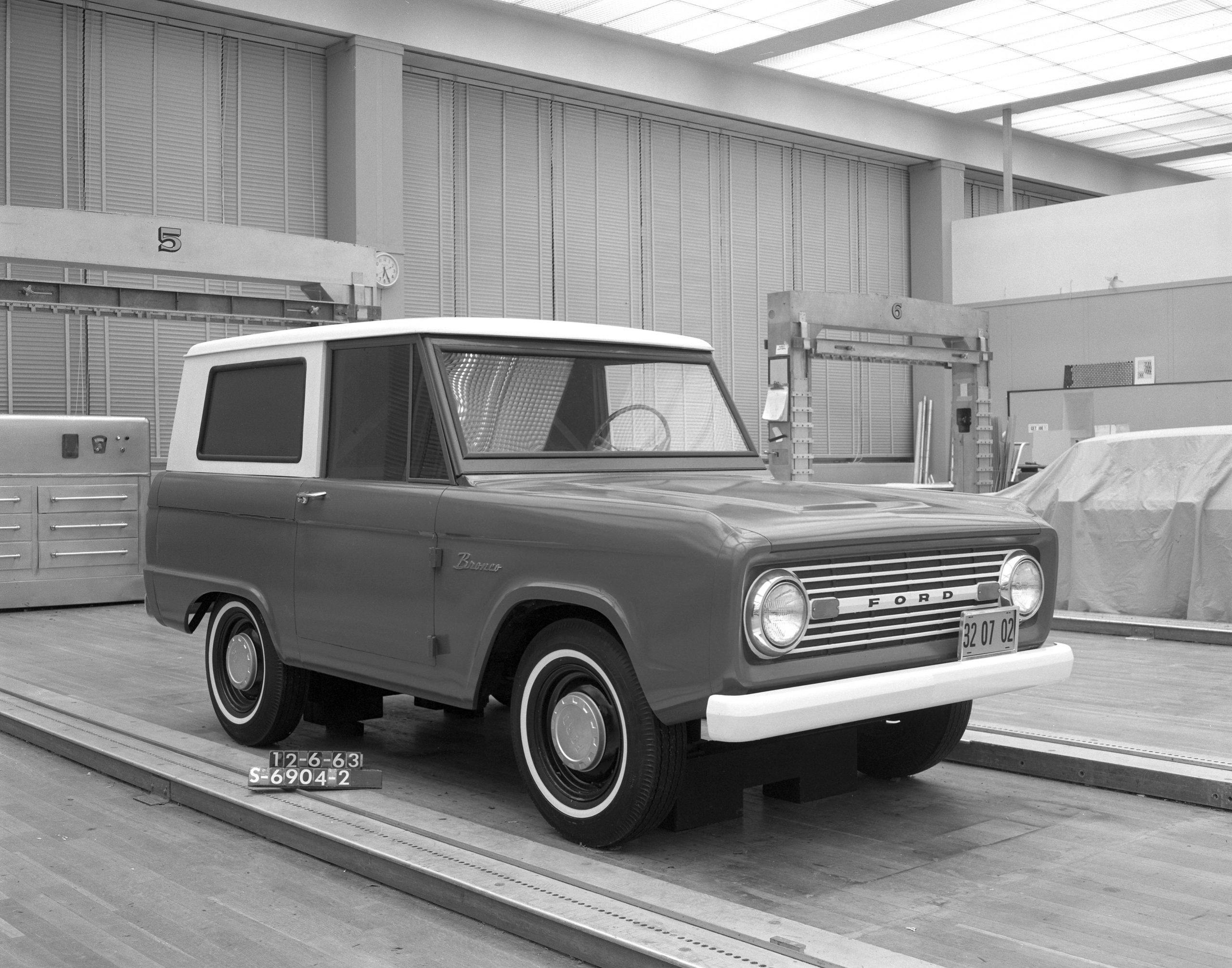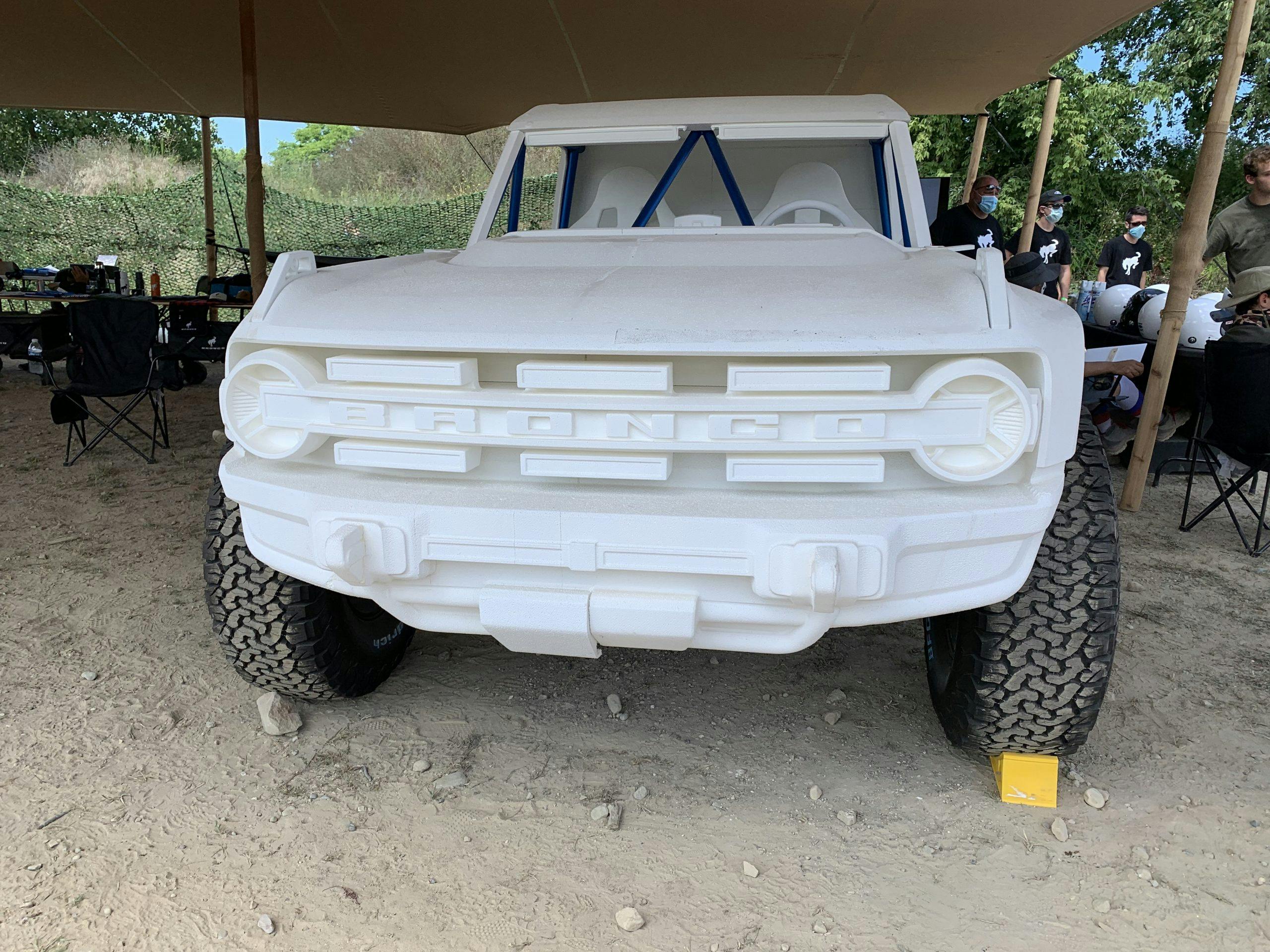Media | Articles
From studio to Baja and beyond, the Bronco’s chief designer shares his vision for the 2021 Bronco

Paul Wraith, chief designer for the Bronco brand, has no illusions about the skepticism he and his team faced developing the 2021 Bronco. “We were all conscious that … there were rumors, speculation that somehow Ford was going to get it wrong—that they’re going to do a mediocre SUV or something, [and] ruin the brand.” Thus, the public’s first glimpse of Ford’s intention for the resurrected Bronco—the Bronco R prototype unveiled ahead of the 2019 Baja 1000—had to be “completely on point,” he says.
The Bronco R accomplished many things for Ford, though a podium finish at Baja was not ultimately among them. The Bronco R served as a test bed for several trickle-down components, including its “production-style” frame and the combination of an independent front with a five-link rear suspension.
For a design-focused glimpse into the Bronco’s genesis, we walked around a full-size styrofoam model of the Bronco R that Wraith and his team mocked up as part of the race truck’s development—a six-month-long whirlwind from sketch to reality. Studying the Bronco R’s design demonstrates how various styling cues on the 2021 production model were foreshadowed on its Baja-going predecessor.
Rear fender line
Marketplace
Buy and sell classics with confidence
What makes a Bronco? Wraith gives us a designer’s perspective: “short overhang, flat body side, level beltline, very upright windshield, very upright rear end.” Think that’s just par for the off-roading course? Check out VW’s cartoonish Atlas CrossSport 2020 Baja 1000 entry.
Another, more subtle Bronco cue lies in the shape of the rear fender. “We have this throwaway gesture arch over the rear wheel,” Wraith says. “However, we brought bits of future Bronco in [the Bronco R], too.” The BRONCO script stamped across the truck’s grille was a first, for example; though you could argue that the FORD on the 1966 model shown established precedent. As FoMoCo plans to broaden the Bronco brand into an entire range of vehicles, the swap makes sense.
Lights—and more lights
Strictly speaking, the race truck doesn’t have a grille, “just a great big opening,” Wraith says. He and his team got creative in that department. “We put three light bars above BRONCO and three light bars below it—actually a representation of the grille but in sort of negative form.” Unfortunately, the cool six-slotted grille mimicked by the Bronco R doesn’t appear on the entire 2021 lineup—only on 2021 Broncos (or Bronco Sports) in Big Bend trim.
“We overcooked it on the lights,” Wraith admits. “Normally there’s a tension between the light engineers, who want lots of lights, and designers, who want slim lights—very moody looking.” When developing the Bronco R, however, Ford Performance told the design team that, in desert racing, more lights meant faster speeds. The designers delivered, with six bars in the not-quite-a-grille, plus one giant bar backlighting the BRONCO type, one in the front bumper, and two mounted on the roof.
“We had so many lights, apparently,” Wraith says, “[that]they had to go through a sequence of turning them on when they were leaving the pits, and then a sequence of turning them off as they were coming back in again. We were only slightly joking that they’d set fire to the landscape as they drove through it.” If you want to see a photo of the Bronco R lit up like a Christmas tree, you’re probably out of luck; the 2019 Baja team rarely ran with all the lights on.
Equipment bar
Ford’s designers didn’t know every bit of kit that their racing team would need out in the desert, so they included a bar that spanned the entire truck immediately in front of the A-pillar. The team could easily clamp whatever it needed onto the bar, whether that was additional lights, additional navigation screens, or GoPro cameras.
The race truck didn’t need side-mounted mirrors, but by extending the bar on either side to form winglets, Wraith and his team also used the bar to suggest them, creating another visual link to the production model. On the 2021 trucks, the accessory bar evolved into a unit spanning the dash on the interior of the vehicle, where you can clamp your own GoPro or iPhone or other device. Handy for trails—and especially for states with hands-free cell phone usage laws.
Trail sights
Wraith did decide to leave some visual cues exclusive to the production model—for example, the trail sights found on the Bronco two- and four-door. Look closely, and you can see slight divots on the ridges framing the Bronco R’s hood where the sights once rested and, when Wraith decided against them, were removed. Now that all has been revealed, look for the sights on the 2020 Ford Bronco R.
A third seat in the Bronco R?
You probably didn’t guess that Ford’s all-out desert racer seats three, not just two. The styrofoam model doesn’t betray this, but the race truck itself ran the 2019 Baja with a driver, a navigator, and “some poor engineer who had to sit in the back,” Wraith says, “surrounded by laptops and diagnostic equipment, because we were scavenging data.”
Since the Bronco R has no traditional door openings to speak of, the engineer had to climb up the truck’s side and enter through a hatch in a roof—like a submarine sailor.
We typically think of racers as get-the-job-done machines, but the chat with Wraith reminded us of a detail we tend to forget—a driver’s physical size. The Bronco R prototype came together so quickly that Wraith’s designers, while they sketched and modeled, didn’t initially have firm measurements for the truck. “We were on the phone to the race team, they were telling us how big the opening on the side could be, [and] we were mocking it up in our studio,” Wraith says. “We had our tallest, thinnest, shortest, fattest, widest people clambering in and out to provision it, because we didn’t know which drivers we were going to be working with.”
Though much of the 2021 Bronco’s design began with the Bronco R, its mission is essentially democratic. “Our hope, our dream is—to be somewhat poetic—we want people to get out of their homes, get into the landscape, and just keep going. If you feel intimidated by it, or if the vehicle’s complicated to use, or if you have to be some technician in order to operate it—then you’re not going to do it,” Wraith says.
We can’t wait to get our hands on the production Bronco’s steering wheel and point the off-roader’s nose towards some trails.












































